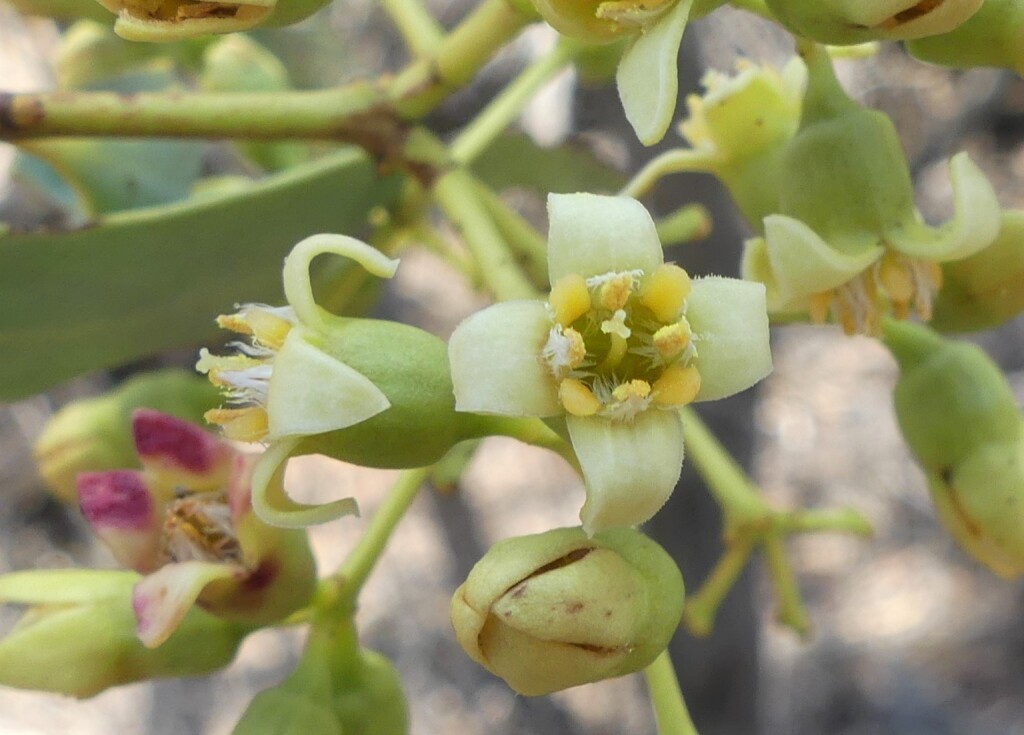Santalum lanceolatum
R.Br. Northern SandalwoodErect shrub or small tree to c. 7 m high, often root-suckering; branchlets spreading and pendulous, angular-striate, glabrous. Leaves opposite, broad-lanceolate to narrow-elliptic, 2–9 cm long, 5–25 mm wide, acute, often mucronate, margins flat, surfaces concolorous or slightly discolorous, often somewhat glaucous; petiole 2–10 mm long. Inflorescences axillary or terminal panicles or racemes; peduncle 5–30 mm long; pedicels c. 1 mm long. Receptacle 2–3 mm long; tepals 4, triangular, 3–5 mm long, obtuse, greenish, caducous; basal hair tuft prominent; disc with oblong or spathulate lobes; style 3–4 mm long, stigma 4-lobed. Drupe ovoid, 7–10 mm diam., blue or purplish, with prominent circular apical scar, edible; endocarp smooth. Flowers mainly Aug.–Jan.
MuM, VRiv, RobP, MuF, NIS. Also WA, NT, SA, Qld, NSW. Endangered in Victoria where currently known with certainty from only 4 small populations-in dry, rocky country at Springhurst and the Warby Ranges, and near the Murray River at Boundary Bend and Torumbarry.
Jeanes, J.A. (1999). Santalum. In: Walsh, N.G.; Entwisle, T.J., Flora of Victoria Vol. 4, Cornaceae to Asteraceae, pp. 35–37. Inkata Press, Melbourne.
 Spinning
Spinning



